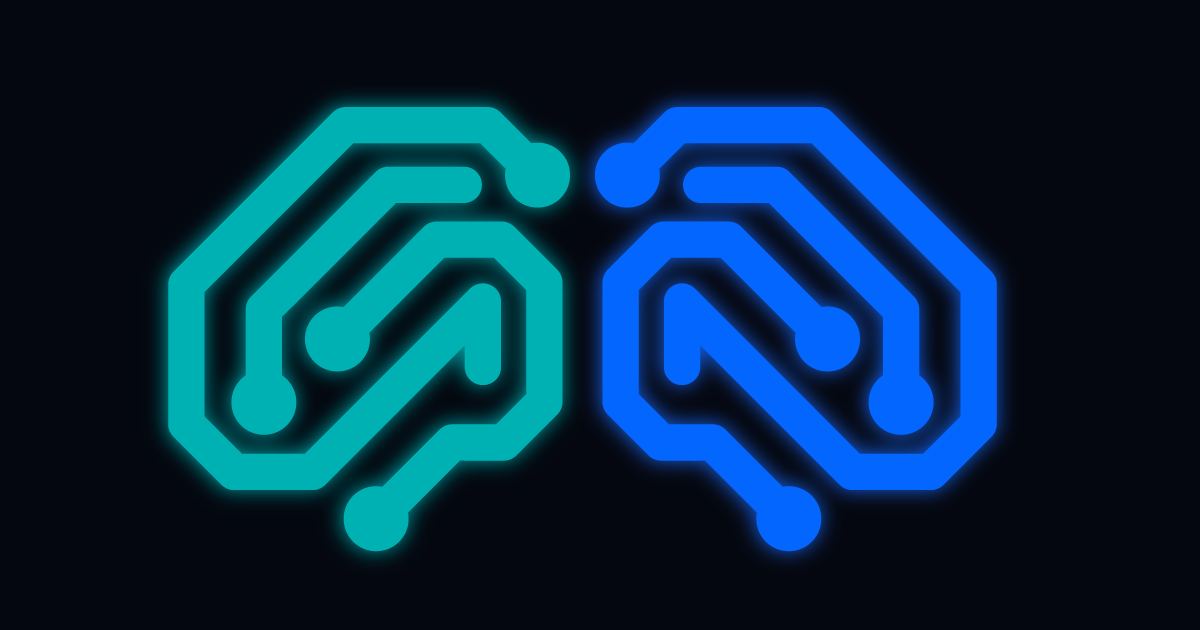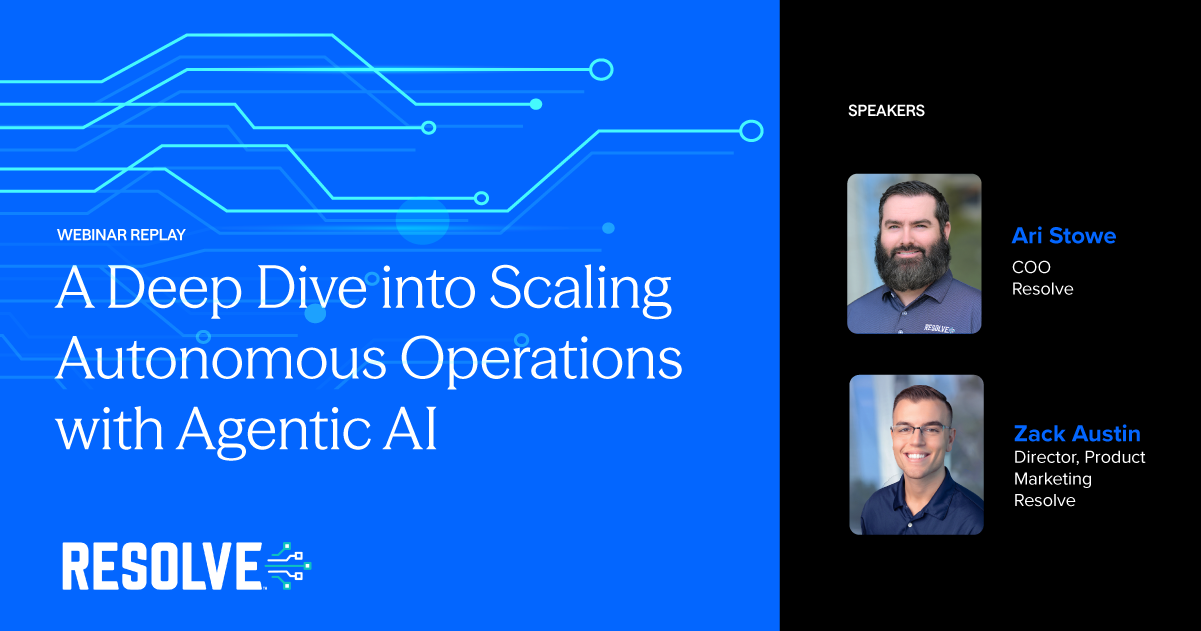
Service Blueprinting and Orchestration for Elevated Customer Experiences
Subscribe to receive the latest content and invites to your inbox.
Chances are, you're familiar with the strategy of adding an additional "9" to service level agreements (SLAs) to boost the experiences your organization provides.
With plenty of ways to do so, there's one that particularly stands out among the others: Service Blueprinting.
Banking executive Lynn Shostack in 1984 first described a service blueprint in a Harvard Business Review publication.
"The use of a blueprint can help a service developer not only to identify problems before they happen but also to see the potential for other market opportunities," Shostack wrote. "While the blueprint is most useful to managers developing new services, others can apply the same principles to test the quality of services for which they contract."
The Power of Service Blueprinting and Orchestration
Orchestration provides real value to organizations. When automations are orchestrated into larger processes, it's often to solve problems quickly and easily, and that alone results in supporting better experiences for customers.
Service Blueprinting goes hand-in-hand with orchestration, empowering organizations to dive into the holistic process they deliver to customers and its touchpoints underneath. Service Blueprinting is a highly ideal tool for building into orchestration and realizing the best possible customer outcomes.
The technology ecosystem for any company is only going to get more complex as time goes on and new trends emerge. That mean we'll have more solutions to deal with, that will have a real impact on your organization's employee and customer experience.
Service Blueprinting, as a legit practice, packs much more punch than a basic service architectural template for how various systems connect. It starts with the customer's experience—what they're trying to accomplish—what they want to see in and feel from your company. The second steps moves into how it's supported, by a combination of human and technology interactions.
The idea is to start with the customer journey and the impact your organization wants to make, and then assess each touchpoint you have, as a human and as a technology, with the customer, before travelling down the stack. What technologies do you touch, that are required to provide your desired level of experience?
Even for many, very simplistic processes, like employee offboarding, at least 50 systems are needed in your environment to ensure the appropriate rights and access to systems is fully turned off, and that audits and logs are filed away into your repository.
Tying all touchpoints together via orchestration releases power that'll make a difference for the customer—an intricate web of systems that create a higher level experience, which will ensure service level agreements (SLAs) are met.
Giving Metrics the "SLA++" Push
Most organizations are focused on achieving SLAs, but the concept of "SLA++" is all about exceeding SLA goals and providing heightened customer experiences.
There are layers of building into experiences. Core, foundational SLA metrics make up the bottom layer, which include uptime, response time, and network latency. Above that layer, metrics like first call resolution, time to resolution, and number of escalations take it a step further, but they're still quantifiable and very easy to track. The do; however, get you closer to measuring the experience customers actually have with your products and offerings. As you step up your metrics game, and join them together, you start getting some leading indicators, some lagging indicators, and other indicators of what's actually going right and what's not.
So the concept of SLA++ takes SLAs further. It challenges IT to look at metrics beyond those of stereotypical SLA measurements—much further than a website being up or down to things like whether a process is kicking off the right automation. Organizations can save an astonishing amount of time and money by automating the process up until deploying technicians and other human-delivered services.
Service Blueprinting and the Customer Journey: Moving the Financial Needle
As StorageMart Global Director of Marketing, leading web development, SEM, SEO, and marketing analytics Sarah Little wrote for the Forbes Communications Council, "The service blueprint is a technical tool to map out how the company's martech stack will support or enhance the customer journey touchpoints. The customer journey elevates the engagement and sentiment of customers, while the service blueprint is the road map, and software will enable the journey."
StorageMart is a fast-growing self storage company with more than 250 locations in the U.S, UK, and Canada. Dedicated to high quality, easy-to-use self storage and friendly customer service, StorageMart prioritizes a welcoming storage experience … which means service blueprinting is everything.
Its leaders know the service blueprint is holistic and comprehensive, and doesn't miss a beat when identifying start-to-finish touchpoints for customers. StorageMart also uses service blueprinting to uncover pain points and focus on post-purchase follow-up information to maintain customer engagement, Little said.
In comparing service blueprinting to the customer journey, the latter must be fully understood before starting to map out where profit can be generated. Best case scenario happens when service blueprinting and the customer journey partner up, as only then can they reach their full potential and have the greatest impact. Your company can bring in revenue along the way of the customer journey, but meeting customers where they are will maximize the income. From there, you can spot which areas of the service blueprint really drive profit.
"The blueprint should show how your business delivers value to the customers through your products and services," Little said. "Once you identify the profitable opportunities, you can start outlining the steps required to capitalize on those opportunities. Carrying out this strategy will help boost profit and improve your business."
Getting Started: Orchestration for Enhanced Customer Experiences
At the end of the day, the foundational idea behind service blueprinting isn't exactly innovative, but it is an effective, sure-bet way of putting yourself in your customer's shoes.
How will your product or service make customers' lives easier, solve their problems, or empower them to achieve more than they thought was possible?
Sometimes, the experience needs to just be simplified to help customers understand how things work. Other times, it might simply provide enjoyment or some type of reward. Regardless, determining what's most important to customers and what they actually experience from your company's offerings allows you to maintain business-critical loyalty.
Service blueprinting is they key to improving services—and that equates to future services innovation as well as a competitive edge in the marketplace.
More on the innovation side of things, digital tools help with the access to collaboration of larger and distributed teams. Disciplines like process engineering have found out how blueprints help add value by mapping to customer experience design, which has lead to increased collaboration between experience and operational practitioners.
We're well into the era of hybrid multi-cloud environments and off-the-charts demand for availability of digital services. Orchestrating the complete incident response process, for example, ensures a great deal of reliability.
READ MORE: Automation + Orchestration = A Continuous Journey to Drive Bigger Business Value
So how's it done?
Successful orchestration starts with a full understanding of the end-to-end process and mapping it out according to information gathered from service blueprinting.
From IT silo to silo, in thinking about orchestration, a process improvement cycle of standard operating procedures (SOPs) starts to develop, where automation can be applied. Building end-to-end automation and starting orchestration is immensely valuable for the business, as it will enhance the experiences customers have with your organization.
Get together with Resole to learn how orchestration can boost your customer experience, and how to get started.






